“I literally got a notice saying my student status was terminated… and I haven’t even been convicted of anything!” If you’re an F-1 student and that sentence hits a little too close to home, you’re not alone. Lately, something strange—and honestly pretty scary—is happening in the world of U.S. student visas.
Since early 2025, international students across the country have been waking up to unexpected SEVIS termination notices. No warning. No hearing. No conviction. Just boom—status gone. And for what? A dismissed charge from years ago? A DUI where the student already completed their program? Or sometimes, seemingly… nothing at all?
Here’s the thing: ICE and the Department of State have been ramping up student visa revocations under vague reasoning like “criminal records check” or “otherwise failing to maintain status.” Problem is, many of these actions are happening based on arrest records alone—without any actual finding of guilt or immigration violation.
That’s right. Just being in a police database can now apparently be enough to lose your visa.
And if you’re on OPT? That’s a whole different panic attack, since most DSOs aren’t even sure if reinstatement is possible during your post-completion period.
Whether you’re a student, a DSO scrambling to explain what’s going on, or an immigration attorney trying to keep your clients in the U.S., the confusion is real—and the consequences are serious. But don’t worry, we’ve got your back. This article will break it all down: the real reasons behind these terminations, what legal codes are being cited (and whether they make sense), and most importantly—what you can actually do about it.
So take a deep breath. You’re not helpless. There are options. Let’s go through them one by one and get you back on stable ground.
Why Are F-1 Student Visas Being Revoked in 2025?
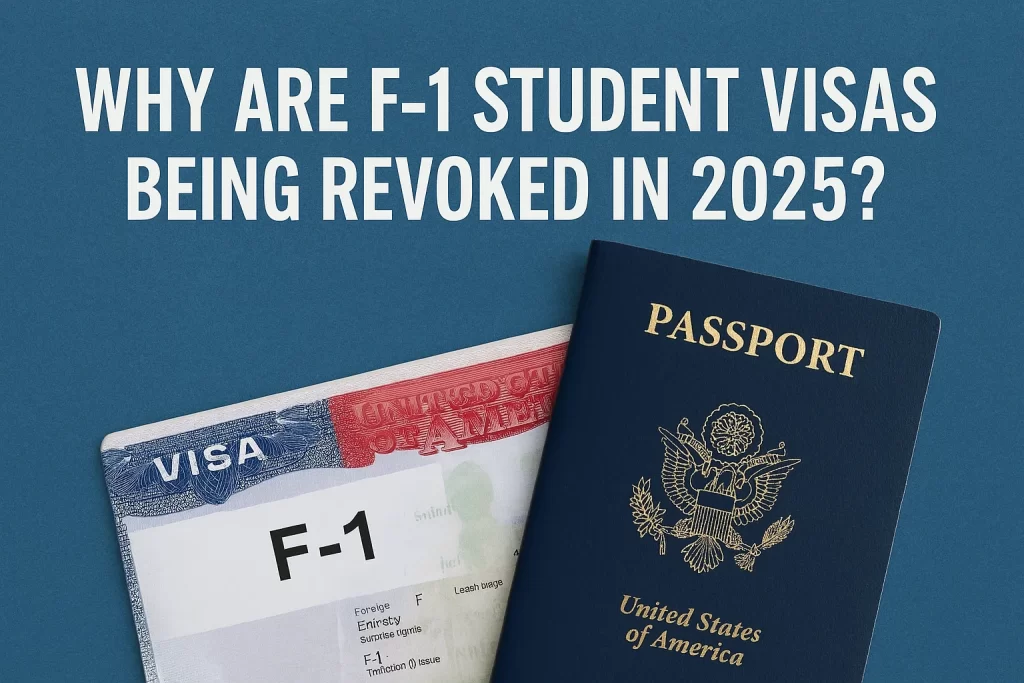
Okay, so first thing’s first—you didn’t mess up. You’re not the only one. This wave of student visa revocations that started hitting in early 2025? It’s not just you. It’s happening nationwide, and it’s affecting students for reasons that, frankly, don’t always make sense.
Let’s talk about what’s really going on behind the scenes.
So, ICE (yeah, that ICE) and SEVP have apparently been combing through criminal databases and cross-checking names of F-1 students. Sounds okay in theory, right? Like, they’re making sure students are complying with U.S. law. But here’s the kicker: they’re not always checking actual convictions. In fact, we’re seeing SEVIS terminations triggered just by arrest records—even if the case was dismissed, diverted, or never even arraigned.
Here’s an example that really got me: a student who had a DUI charge from five years ago, completed their court-ordered program, got the case dismissed—and still got their visa revoked. Another one? A domestic violence arrest where the prosecutor dropped the case before it even went to court. Boom. Visa gone. No conviction, no warning, just a “criminal records check” flag and a SEVIS termination notice.
And what’s even wilder? Sometimes, the charges weren’t even for crimes involving moral turpitude (CIMTs). Like, we’re talking trespass, traffic violations, summary offenses. Nothing that should make someone inadmissible or deportable under the usual rules. But here we are.
The other problem? Nobody’s really saying which database they’re using. Is it just the FBI rap sheet? Is it state court records? A local arrest log? We don’t know. And when you combine that with an opaque agency like ICE and a lack of due process before pulling the plug on someone’s status… yeah, it’s a mess.
To make it worse, the official reason SEVIS gives is vague at best: “Otherwise failing to maintain status.” Or they cite INA 237(a)(1)(C)(i)—violating the terms of nonimmigrant status. But that’s not the same as being criminally deportable. It’s just… whatever they decide it means at the moment.
All of this adds up to a system that feels more like guilt by algorithm than any kind of fair or lawful review. It’s not that students are breaking the rules—it’s that ICE is moving the goalposts, and no one’s telling us the new rules.
But you’re not powerless. In the next section, we’ll break down those confusing SEVIS termination codes and what they actually mean for your ability to fight back.
Common SEVIS Termination Reasons Explained
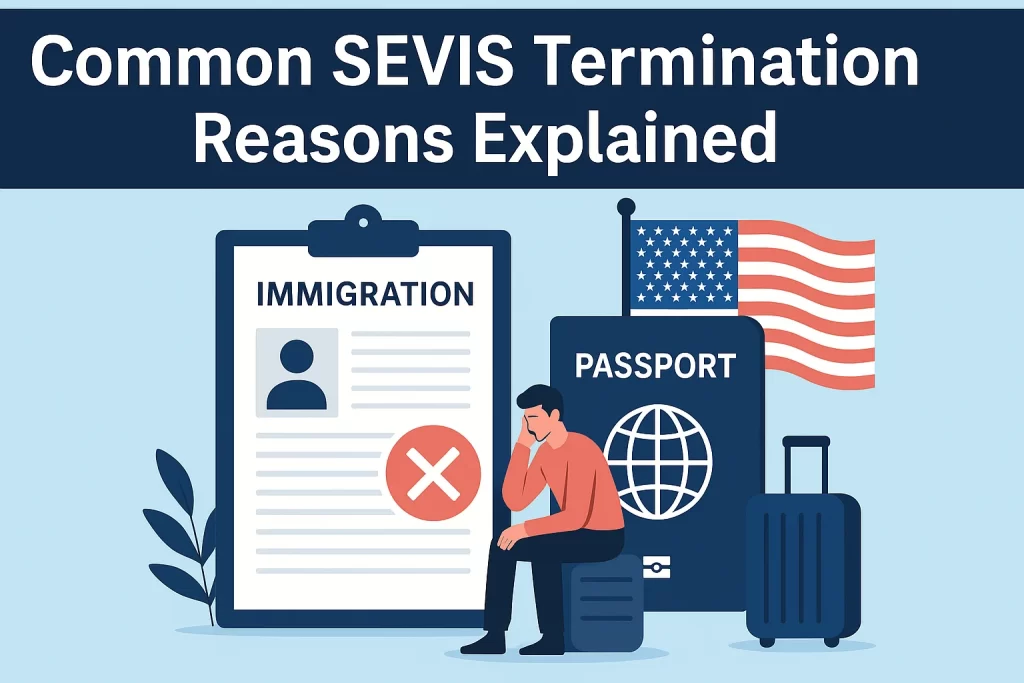
Alright, let’s decode some of this bureaucratic gibberish together. If you’ve ever opened up a SEVIS record and stared at a termination reason thinking, “what even is this?”, you’re not alone. These codes sound official, but half the time they’re vague, misleading, or flat-out misapplied.
Here are the main ones popping up in 2025—and what they really mean:
🟥 “Otherwise Failing to Maintain Status”
This one’s the all-purpose junk drawer of SEVIS termination reasons. It basically means: “we think you messed up, but we’re not going to be specific.” It’s commonly used when there’s a red flag in your file, even if it’s not a clear violation.
-
It’s being used now for old arrests, dismissed charges, or even mistaken identity.
-
The language gives ICE wiggle room to justify termination without showing actual evidence of wrongdoing.
🟥 INA 237(a)(1)(C)(i)
This is the big one showing up on a ton of termination notices. It says the person violated their visa conditions.
-
But here’s the kicker: it’s often used improperly. Like for a charge that was dropped or never even filed.
-
The thing is, if the reason is under (C)(i) and not under a more serious ground like 237(a)(4)(C), you’re still technically eligible to apply for reinstatement. So, this matters a lot.
🟥 Visa Revocation
This one comes from the Department of State. It means your visa was issued, but “new information” came to light afterward.
-
Often, that “new info” is something already known and resolved—like a dismissed criminal case from years ago.
-
Once a visa is revoked, SEVIS often follows with a termination. It’s like a one-two punch.
-
The DOS usually sends a cryptic message telling students to “show intent to depart” using the CBP One app. Not exactly helpful.
🟥 SEVIS Code: “Individual Identified in Criminal Records Check”
This is the scariest one because it sounds like you’re on some kind of watchlist—but it might just mean you got pulled over once or had a roommate call the cops during an argument.
-
It doesn’t mean you’re a criminal.
-
But it can still trigger an auto-termination if a script flags your name in a shared database.
So yeah, it’s not just about what you did—it’s about how the system reads what’s in your record. And the system? It’s currently a blunt instrument. No nuance, no context.
In the next section, we’ll talk about the worst-case scenario: Can you actually be deported after a visa revocation? And more importantly—how to stop it before it gets that far.
Can You Be Deported After a Visa Revocation?
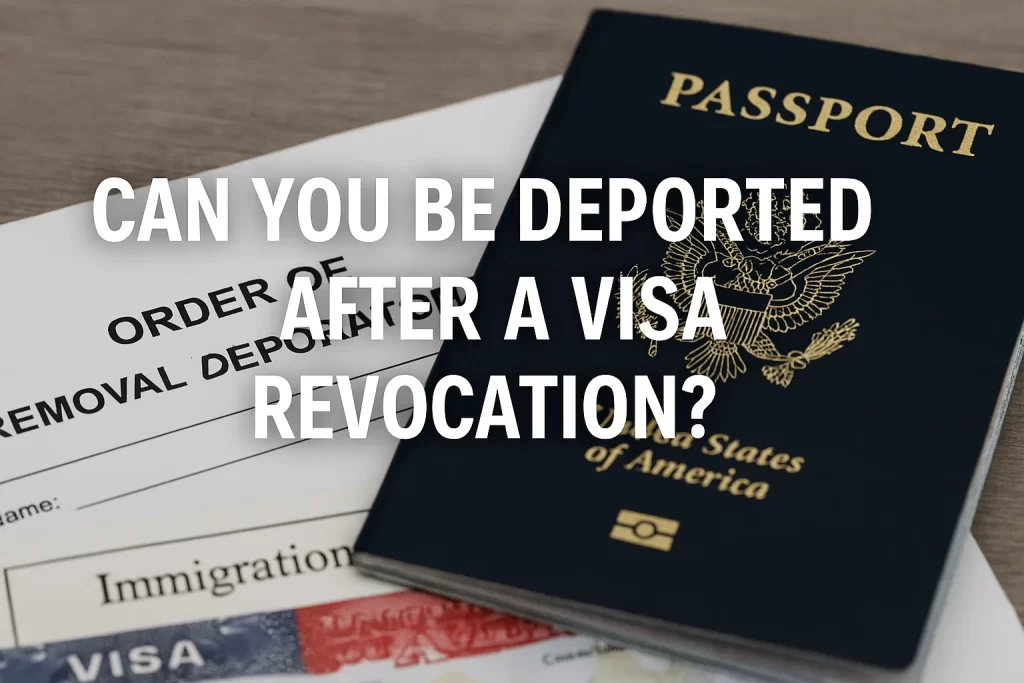
This is the nightmare scenario everyone worries about—and for good reason. You’re just living your life, maybe going to class or working on OPT, and then suddenly, your SEVIS record is terminated. Next thing you know, you’re googling “Can ICE show up at my door?” at 3 a.m.
Let’s break it down.
First, here’s the basic truth: revocation of your visa and termination of SEVIS status don’t automatically mean you’ll be deported. You’re not going to vanish in a puff of smoke because of a database entry. But… it does mean the clock starts ticking.
Once your SEVIS record is terminated, you’re technically out of status. That makes you vulnerable to being placed in removal proceedings. If ICE picks up on it (and they are definitely watching closer these days), you might receive a Notice to Appear (NTA). That’s the official document that starts the deportation process.
Now here’s the twist: a lot of these recent revocations are citing things like “INA 237(a)(1)(C)(i)”—which is a status violation, not a criminal ground of deportability. That distinction matters a lot. Why? Because under 8 CFR 214.2(f)(16)(i)(E), you may be eligible for F-1 reinstatement if you’re not deportable on any ground other than INA 237(a)(1)(B) or (C)(i).
But what if the only reason you’re in proceedings is because of a visa revocation under INA 221(i)? There’s some hope there too. The law says a visa revocation can’t be reviewed in court—unless it’s the sole basis for removal under 237(a)(1)(B). So, in that case, your attorney can challenge whether the revocation itself was lawful or based on faulty info.
And here’s a wild one we’re seeing now: students being detained before they even have a chance to file anything. Just straight-up picked up from their apartment or pulled aside at the airport. It’s rare, but it’s happening—especially when SEVIS termination is tied to criminal records, even if no conviction ever occurred.
Bottom line? If your SEVIS record was terminated and you’re worried about deportation:
-
Don’t wait. The earlier you act, the more options you have.
-
Get legal help immediately—especially to file a reinstatement or challenge the NTA.
-
Stay calm and informed. Being proactive can mean the difference between staying and being removed.
Next up, let’s dig into those actual options for students whose status just got cancelled.
Options If Your Student Status Was Revoked
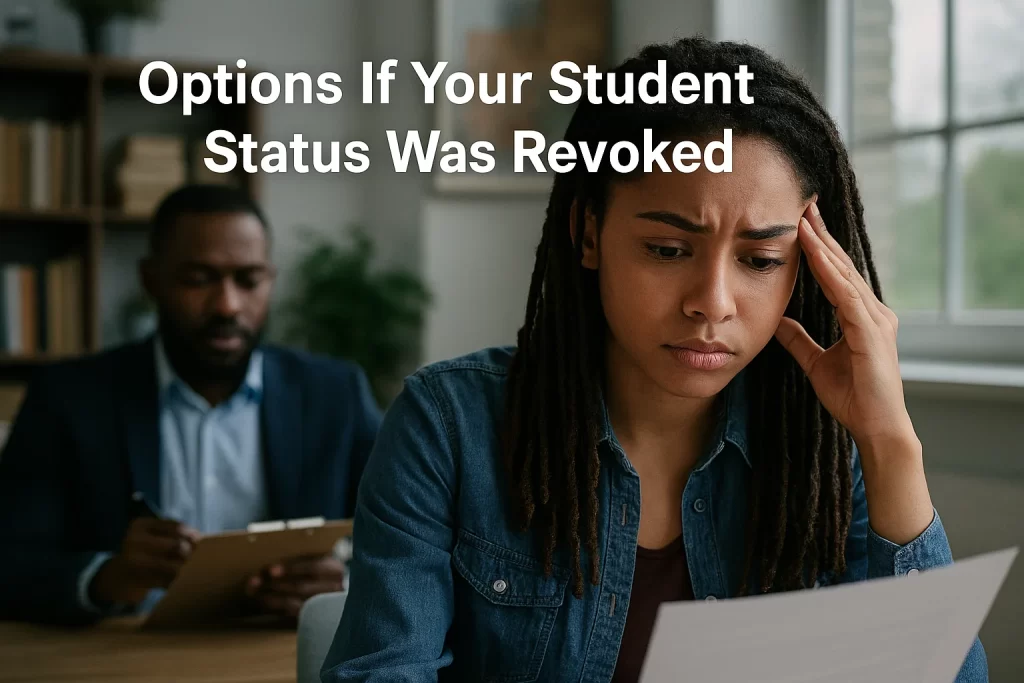
So, the nightmare happened. You got that dreaded email. Your SEVIS record was terminated. Your DSO looks just as confused as you feel. ICE isn’t exactly returning calls. And now you’re wondering—am I totally screwed?
Not necessarily. Let’s talk about what options are still on the table, depending on your situation.
✅ File an I-539 for Reinstatement of F-1 Status
This is the primary in-country remedy available to you—and yes, you can file this even after SEVIS termination if you’re eligible.
Here’s how it works:
-
You usually have 5 months from the date of termination to file.
-
You must not be deportable on any ground other than INA 237(a)(1)(B) or (C)(i)—so things like “failed to maintain status” are still eligible.
-
You need to show your violation was minor or beyond your control, and that you’re otherwise a serious student.
-
While the I-539 is pending, you’re not accruing unlawful presence, and ICE usually won’t act—unless there are other red flags.
💡 Pro tip: Submit as much evidence as possible—SEVIS termination notice, transcripts, letters of support, and court records (if applicable). Transparency helps.
⛔ Change of Status to B-2 or H-1B? Not So Fast
Let’s clear something up here: you can’t just change status after SEVIS termination. If your F-1 status is gone, then you’re not eligible to file a change of status to B-2, H-1B, or anything else from within the U.S.
Instead:
-
You’d have to depart the U.S., apply for the new visa abroad, and reenter with that new visa type.
-
This applies to F-1 (starting over with a new I-20 and visa), B-2 (if trying to wrap up affairs), or H-1B (with a petition filed via consular processing).
Basically, once you’re out of status, USCIS won’t approve a COS request. You’ll have to leave and come back in on the new status.
✅ Marriage to a U.S. Citizen (I-130 + I-485)
If your relationship is real and you’re eligible, adjustment of status (AOS) might still be on the table. Yes, even if your SEVIS was terminated.
Caveats:
-
You must not have been placed in removal proceedings yet.
-
The marriage must be bona fide, and not just for immigration benefit.
-
Timing is everything—you’ll want to move fast before an NTA is issued.
✅ Voluntary Departure and Reapply from Abroad
If things are too messy—or ICE is circling—it might be best to leave the U.S. voluntarily and prepare to reapply from your home country.
You can try for:
-
A new F-1 visa with a fresh I-20 and a clear explanation of what happened.
-
A different visa like H-1B (if a petition is filed and approved under consular processing).
-
Even nonimmigrant waivers, if there are inadmissibility issues.
The consulate will be tough—but not impossible—especially if you bring documentation, court dispositions, and can explain the situation clearly and sincerely.
🚫 What NOT to Do:
-
Don’t just “wait it out” or try to stay under the radar. That only hurts your record.
-
Don’t assume you can change status inside the U.S. after SEVIS termination—you can’t.
-
Don’t delay in talking to a qualified immigration attorney who understands F-1 nuances and SEVIS strategy.
Next up, we’ll zoom in on OPT and STEM OPT students—because let’s be honest, their situations are a special kind of confusing.
Special Considerations for OPT and STEM OPT Students
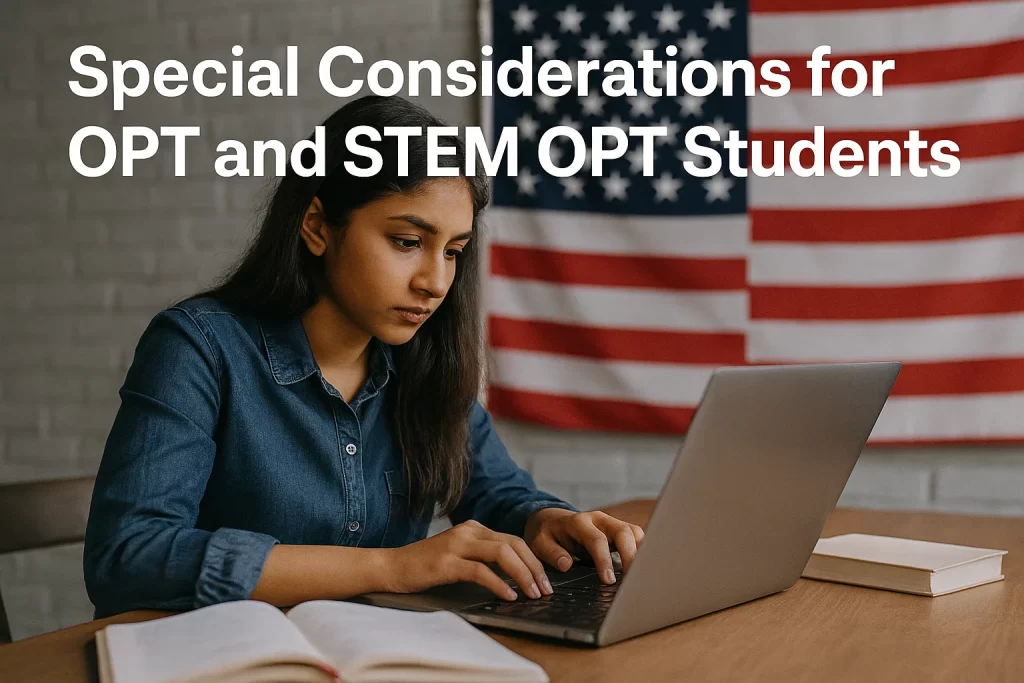
If you’re on OPT or STEM OPT and just got hit with a SEVIS termination, you’re probably freaking out. And I don’t blame you. It’s one thing to deal with visa issues while you’re in school, but it’s a whole other beast when you’re working full-time, building your career, and trying not to get deported mid-meeting.
Here’s the tricky part: OPT is part of your F-1 status, so when your SEVIS record gets terminated, that work authorization is toast too—even if your EAD card is technically still valid.
🚫 DSOs Are Telling Students They Can’t Reinstate on OPT—But Is That True?
It depends. Most DSOs (and some lawyers) assume reinstatement isn’t possible during OPT because you’re “not enrolled in school.” But that’s not exactly what the regulations say.
According to 8 CFR 214.2(f)(16), you can file for reinstatement if:
-
You’re not deportable for anything other than failing to maintain status,
-
You haven’t been out of status for more than 5 months, and
-
You’re pursuing (or plan to resume) a full course of study.
That last part is the kicker. So, best option would be to get admitted into a new program for reinstatement, perhaps a master’s degree program with a CPT component if you want to work while pursuing studies.
💣 If Reinstatement Won’t Work, What Are Your Options?
Unfortunately, if reinstatement isn’t feasible—because you’re out of time, the record says you’re deportable, or ICE gets involved—you’re probably looking at one of these paths:
-
Depart the U.S. and try to re-enter on a new F-1 visa
This could work if you can get a new I-20 from your old school or a new program. You’ll have to reapply for the visa abroad and be ready to explain what happened—and why it won’t happen again. -
Apply for a different visa category abroad
If you have a job offer and your employer is willing, they might be able to file an H-1B under consular processing. Once approved, you’d leave, attend a visa interview, and re-enter. -
Marriage-based adjustment of status (if eligible)
Same rule applies here as before—if you marry a U.S. citizen and haven’t been placed in removal yet, you may be able to file I-130/I-485. This is one of the few in-country options that can bypass the terminated F-1 issue.
🧠 If You’re on STEM OPT… Prepare for Extra Pain
STEM OPT students have even more at stake:
-
The work is often highly skilled and hard to replace
-
You may have a pending H-1B cap petition, and your cap-gap status relies on F-1 being valid when filed
-
Losing your SEVIS record can mess up your ability to apply for the 24-month extension, even if you were planning to do it soon
So yeah… not fun. But again, reinstatement might still be possible.
Legal Tools and Case Strategies
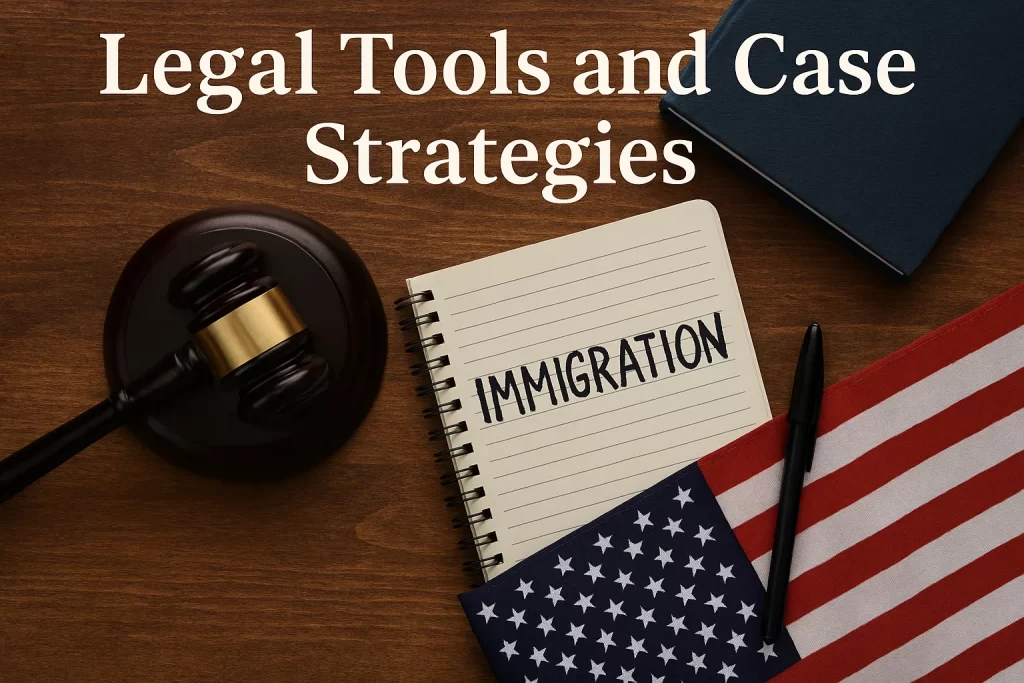
So you’ve been hit with a SEVIS termination or visa revocation. It feels unfair. Maybe you didn’t even do anything wrong. What now?
Let’s talk strategy—because believe it or not, attorneys across the country are fighting back hard. And they’re getting traction.
⚖️ Use the SEVIS Record and Court Disposition to Show No Violation
First things first: you need the SEVIS termination reason in writing. This might be in the DSO portal, in the student’s SEVIS printout, or in the revocation notice itself.
Pair that with:
-
Arrest report (if applicable)
-
Court disposition showing dismissal, diversion, or non-CIMT conviction
-
Any letters from DSOs or school explaining academic compliance
If ICE or SEVP terminated a student for something that’s clearly not a deportable offense, that’s your foothold. The goal here is to show:
-
The termination was in error,
-
The student is not deportable under any ground except INA 237(a)(1)(C)(i), and
-
The student is therefore eligible for reinstatement.
📄 Leverage the ACLU TRO from New Hampshire
This is a big one. In April 2025, the ACLU filed for a Temporary Restraining Order in New Hampshire on behalf of F-1 students with revoked visas and SEVIS terminations tied to arrests—but no convictions. And guess what? They won.
Key arguments included:
-
Lack of notice or due process
-
Improper reliance on arrest records instead of court outcomes
-
Failure to follow APA (Administrative Procedure Act) rulemaking procedures before changing termination policies
You can borrow the language from that TRO and use it in your own motions, agency responses, or letters to ICE. Several attorneys are doing this now with some success.
👉 Link: ACLU TRO brief
📚 APA Challenge: No Rulemaking = No Authority
ICE and DOS seem to have quietly shifted policies this year. They’re now terminating students based on arrest data and issuing blanket visa revocations. But where’s the public rule? The guidance memo? The Federal Register notice?
There isn’t one.
That opens the door to an APA (Administrative Procedure Act) challenge. The argument is:
-
Agencies must provide notice-and-comment rulemaking before changing enforcement criteria.
-
Mass SEVIS terminations and revocations based on new logic = a substantive rule change.
-
Since they didn’t follow APA, those terminations are unlawful.
It’s not a guaranteed win, but it’s a strong foundation for lawsuits, motions to reopen, and even mandamus if DHS refuses to respond.
🛡️ Build a Record for Mandamus or Federal Litigation
If you’re dealing with:
-
Long reinstatement delays,
-
SEVIS terminations based on false or unreviewed records,
-
Or a client who’s already in removal proceedings,
…you might be looking at federal court as your only path.
Document everything:
-
Every DSO email
-
Every SEVIS code
-
Every step taken to get the government to fix the record
This kind of paper trail is gold if you later need to file in federal district court for a declaratory judgment, TRO, or mandamus.
How Schools and DSOs Are Responding

Here’s a truth bomb: most DSOs are just as confused as you are right now.
Seriously—universities are scrambling. International student advisors are getting flooded with panicked emails, SEVIS alerts, and baffling revocation notices from DHS and DOS. And since no formal guidance was issued, many DSOs are flying blind.
😰 “We Don’t Know Why This Happened” – The Common DSO Response
If your DSO told you they’re not sure why your record was terminated, they’re probably telling the truth. SEVIS updates come without full explanations, and ICE rarely gives schools a heads-up.
We’re hearing things like:
-
“SEVIS was terminated for ‘criminal records check,’ but no details were provided.”
-
“The notice says the visa was revoked, and we were just informed by DHS, not asked for input.”
-
“They’re being removed for a DUI from 2019 that the student disclosed years ago.”
DSOs don’t have the authority to reverse a SEVIS termination once it’s initiated by ICE or DOS. That has to go through reinstatement or litigation.
📉 DSOs Have Limited Tools—but You Still Need Them
Even though they can’t fix a terminated SEVIS record, your DSO is still an essential ally. Here’s how they can help:
-
Print out your SEVIS history, including the termination code and remarks
-
Provide a new Initial I-20 if you’re attempting to reenter the U.S. after a trip abroad
-
Write support letters for your reinstatement application or legal filings
-
Confirm your academic standing, which can strengthen your case
In short, the DSO can’t undo the damage, but they can help you build the file to clean it up.
🎓 Some Schools Are Stepping Up—Others, Not So Much
Certain universities—especially large research schools or those in immigration-aware cities—are getting proactive:
-
They’re connecting affected students with legal counsel
-
They’re reporting case trends to AILA and NAFSA
-
They’re helping students re-enroll or reapply from abroad
But smaller colleges or less experienced ISS offices? Not so much. In some cases, DSOs are giving incorrect info, like:
-
“You can’t reinstate if you’re on OPT” (false in many cases)
-
“You must leave immediately” (not always true)
-
“There’s nothing we can do” (usually not true if they try)
That’s why it’s important to verify everything you’re told with an immigration attorney who knows the current climate.
📬 If You Haven’t Received an Email Yet—Stay Vigilant
Some students aren’t even told that their SEVIS record was terminated until they check their portal or receive a scary email from their DSO or the school.
If you:
-
Recently had any police contact (even minor),
-
Are on OPT, or
-
Have ever had an issue that might appear in a records check…
…log in to your SEVIS portal or email your DSO. It’s better to catch it early than to learn about it at a TSA checkpoint.
What Immigration Lawyers Are Doing to Fight Back

If you’re feeling lost in all this chaos, here’s a bit of good news: immigration lawyers across the U.S. are mobilizing fast. And they’re not just taking this lying down—they’re organizing, litigating, and sharing resources to push back against what many see as a policy shift without proper process.
Let’s talk about what’s happening on the legal frontlines.
🧑⚖️ Class Action Lawsuits Are Being Filed
Multiple class actions have now been filed by students affected by SEVIS terminations and visa revocations:
-
ACLU’s New Hampshire case was the first major one to grab headlines—and they already secured a Temporary Restraining Order (TRO) that halted removals for students in similar situations.
-
Another case has emerged in the Western District of Pennsylvania (WDPA) on behalf of recent grads on OPT who got revocation notices with little or no explanation.
These suits argue that:
-
The government is relying on arrest records, not convictions,
-
Terminations were done without notice or opportunity to respond, and
-
ICE and SEVP failed to follow APA rulemaking requirements before shifting how F-1 terminations are handled.
🤝 Lawyers Are Coordinating Behind the Scenes
Groups of attorneys are now sharing data, strategy, and even legal templates through:
-
AILA (American Immigration Lawyers Association)
-
NAFSA (Association of International Educators)
-
Private attorney listservs and working groups
If you’re an attorney or affected student, reaching out to these networks can make a huge difference in knowing how to respond and what arguments are working.
📑 Legal Playbook Being Shared: TROs, APA Claims, and FOIA
Lawyers are starting to build a semi-standard playbook:
-
TRO/Preliminary Injunction motions based on due process violations
-
APA lawsuits challenging ICE’s failure to publish a rule before changing enforcement
-
FOIA requests to uncover what databases and criteria are actually being used for the terminations
It’s not just about fixing individual cases anymore. These filings are aimed at forcing DHS and DOS to explain themselves—and roll back broad enforcement that’s sweeping up innocent students.
📣 Advocacy on the Hill and in the Media
Lawyers and student advocacy groups are now pushing for:
-
Congressional oversight, particularly in committees tied to education and immigration
-
Media coverage, especially when a student with a dismissed charge or clean record is targeted
-
Public pressure to force ICE to clarify or walk back its current approach
This pressure is already working. After media coverage and the ACLU’s court win, some schools and DSOs are being more transparent. And at least for now, ICE seems to be slightly more cautious in some regions.
Conclusion: What to Do If Your Student Visa Was Revoked
Let’s be real—this whole situation is a mess.
Student visa revocations and SEVIS terminations in 2025 are happening fast, often without warning, and in many cases, for reasons that don’t hold up under scrutiny. Arrests without convictions, dismissed charges, and even minor infractions from years ago are suddenly being treated like grounds for deportation. And students—especially those on OPT or STEM OPT—are being left in legal limbo, sometimes even detained.
But here’s the most important takeaway: you’re not alone, and you’re not powerless.
You have options. Whether it’s:
-
Filing a timely I-539 for reinstatement if you’re still within the 5-month window,
-
Gathering documents and reapplying from abroad with a fresh I-20 and a solid explanation,
-
Pursuing adjustment of status through marriage or another path,
-
Or joining one of the emerging class action lawsuits or TRO motions pushing back against ICE and DOS overreach—
There is a way forward.
And it starts with action. Don’t ignore that DSO email. Don’t wait until ICE shows up at your door. Don’t assume you’re the only one dealing with this. And please, don’t trust internet rumors over actual legal guidance.
Instead:
-
Talk to your DSO to get your SEVIS record printout and details about your termination
-
Contact an immigration attorney with experience in student visa issues
-
Get organized. Gather your transcripts, court records, arrest reports (if any), and any communications from your school or ICE
Because at the end of the day, the system might be broken—but that doesn’t mean you have to be.
If this article helped you, please consider sharing it with other students, DSOs, or attorneys. We’re stronger when we’re informed—and we fight smarter when we fight together.
